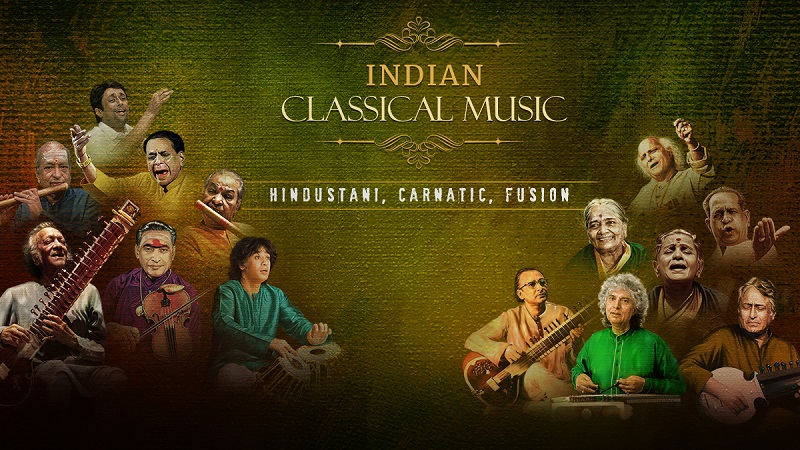Current Context
Hindustani classical singer and music maestro Utsad Rashid Khan passed away in Kolkata on January 9.
About
- He died at a Kolkata hospital on Tuesday after a four-year battle with prostate cancer. He was 55.
- Ustad Rashid Khan, who belongs to the Rampur-Sahaswan Gharana, is the great-grandson of gharana founder Inayat Hussain Khan.
Indian Classical Music
Two distinct schools of Indian Classical Music practiced in India such as:
- Hindustani Classical Music, which is mainly Practice in North India.
- Carnatic Music which is practiced mainly in Southern India.
While the historical roots of both the music types belong to the Bharata’s Natyasastra, they diverged in the 14th century.
The Hindustani branch of music focuses more on the musical structure and the possibilities of improvisation in it.
The Hindustani branch adopted a scale of Shudha Swara Saptaka or the ‘Octave of Natural notes’.
Hindustani Classical Music:
Hindustani music is primarily based on elements of ancient Vedic tradition.
It has been heavily influenced by Persian, Arab and Afghan elements which have added a new dimension to Hindustani music.
It is based on the Raga system. Hindustani Music is vocal-centric.
There are ten main styles of singing in Hindustani music like
- The Dhrupad,
- Khayal,
- Tappa,
- Chaturanga,
- Tarana,
- Sargam,
- Thumri and Ragasagar,
- Hori and Dhamar.
Although Hindustani classical music is focused on vocal performance, a number of musical instruments are also strongly associated.
There are some purely instrumental forms of performances, such as the theme with variations known as gat.
This music has been passed on from teacher to student through parampara. Many Hindustani Music Musicians actually trace their lineage all the way back to Tansen.
The most prominent instruments are the sitar, sarod, violin, sarangi, flute, shehnai, harmonium, santoor etc.
Carnatic Music
- Carnatic classical music is one of the main distinct school of Indian Classical Music practiced mainly in South India.
- The musical concepts of carnatic music (including swara, raga and tala) is based at several ancient works, particularly Bharat’s Natya Shashtra and Silappadhikaram by Ilango Adigal.
- Carnatic music remained relatively unaffected by Persian and Arabic influences.
- It is taught and learned through compositions, which encode many intricate musical details, also providing scope for free improvisation.
- Nearly every rendition of a Carnatic music composition is different and unique as it embodies elements of the composer’s vision, as well as the musician’s interpretation.
- The main emphasis in Carnatic music is on vocal music; most compositions are written to be sung, and even when played on instruments, they are meant to be performed in a singing style (known as gayaki).
- The most prominent instruments of Carnatic music are Violin, Veena, Mandolin, Flute, Mridangam etc.
Similarities between
While Hindustani and Carnatic music may differ in style, they share a deep bond through three fundamental elements: “swara” (musical notes), “raga” (melodic scales), and “tala” (rhythmic patterns).
- This shared foundation underscores their common Indian heritage.
Further solidifying their connection, both forms of music boast strong religious ties. Hindustani music is said to have roots in the Vedic period, steeped in ancient Hindu traditions.
Carnatic music, on the other hand, blossomed during the Bhakti movement, where devotional expression played a central role.

